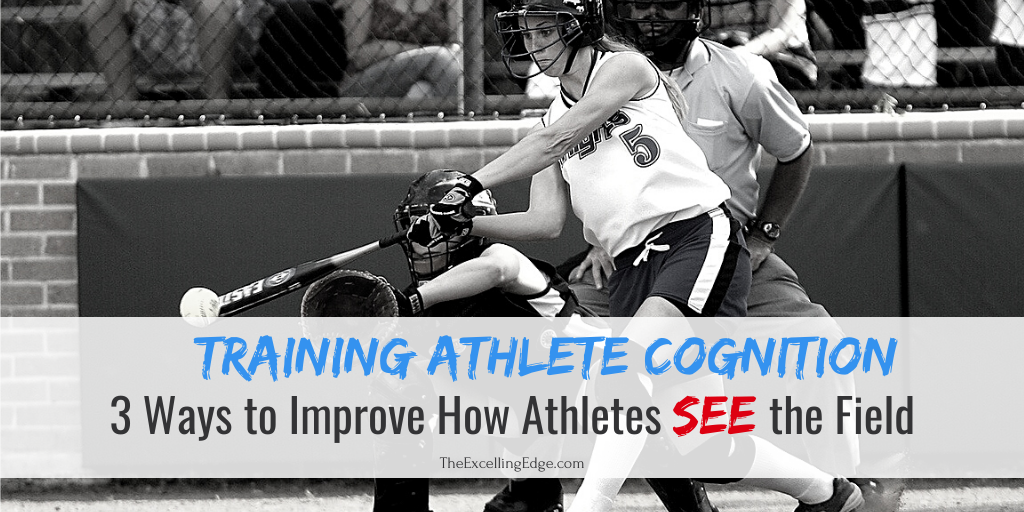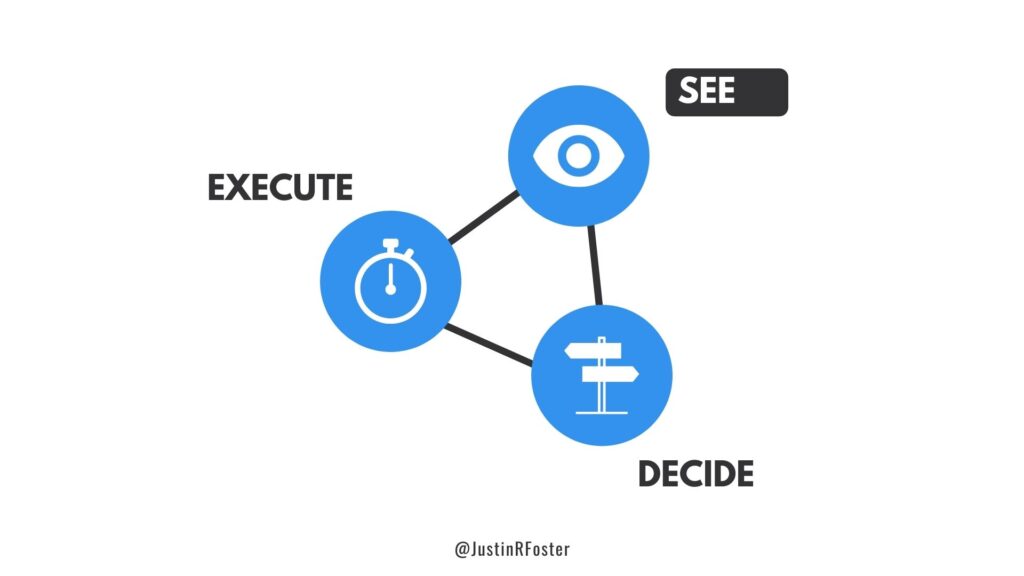
Training athlete cognition is the next frontier in mental performance. Cognition involves the way athletes see, decide, and execute on demand (Zaichkowsky & Peterson, 2018). In the second of a four-part series, this article will focus on the importance of sports vision and how athletes see the field, court, or course.
How Important is Vision in Sports?
Multiple studies revealed that elite athletes have better visual skills than the rest. Conventional wisdom tells that 20/20 vision is ideal, but that is far from the case when it comes to sport performance. Many sports put a tremendous amount of visual demands on athletes with fast moving objects, complex movements from teammates and opponents, and nearly impossible feats of timing and eye-hand coordination.
A few key stats for you:
- 70% of the body’s sensory receptors are in the eyes
- 80% of athletes’ sensory input (i.e., perception) is visual
- 90% of the brain is involved in vision-related tasks
Visual skills can be divided into two categories: visual hardware and visual software.
Visual Hardware
Visual hardware involves the more static functional aspects of vision such as visual acuity, color sensitivity, and depth perception. These are the visual skills we typically think of when it comes to vision. While visual hardware can generally be improved, it has limited impact on sport performance. Put simply, athletes can still excel in sport without 20/20 vision.
Visual Software
Visual software involves the more dynamic visual aspects of eye movement (also called eye tracking) such as visual search, pursuits, and anticipation time. Athletes’ eye movements allow them to detect and track both objects and movements of teammates and opponents – key skills in sport. These are the skills elite athletes excel in and are linked to achieving higher levels of sport. These more dynamic visual skills are more malleable and thus the focus of effective vision training exercises designed to give athletes a competitive edge.

Why Athletes Should Train Sports Vision
Early research on generalized vision training programs was inconclusive at best. However, recent advances in technology and methodology have shown significant benefit to athlete performance. Specifically, training eye movement (visual software) has shown to improve:
- Reaction time
- Hitting performance
- Putting performance
- Quality of ball contact
- Skill execution
- Reduced incidences of concussion
- Quicker return to play
Training athletes’ cognition begins with improving their sports vision.
3 Easy Ways Athletes Can Improve Sports Vision
There are myriad ways for athletes to train and improve their sports vision. These include basic exercises, on-field training, technology-infused training, exercises that can be done in the gym, sport lenses, and even supplements. As a starting point, here are 3 easy ways for athletes to improve their sports vision.
1. Reduce Near-Focus Tasks Pre-Competition
This is probably the simplest vision enhancing strategy, but athletes may struggle to follow through. Research (specifically in tennis) reveals that competitors who focus their eyes on near range tasks (i.e., computer or mobile screens) perform significantly worse on the court. Encourage athletes to refrain from being on mobile devices before competitions and limit time in the hours leading up to game time.
2. Train with Strobe Eyewear
Strobe Eyewear (called stroboscopic training) is a fun and easy way to train sports vision. It may be my favorite way to improve an athlete’s visual system. Athletes can wear them during almost any sport-related training – physical training, ball handling, skill work, etc. They are also great for off-the-field exercises. The best on the market are Senaptec’s Strobes. (More on Strobe training in a future article.) Contact me for more on Strobe training, custom programs, or to get a coupon code.
3. Warm-up the Vision System
High performers are deliberate about warming up their bodies, muscles, and movement patterns. They need to bring the same intentionality to warming up their visual system. A couple of simple ways to do this are:
- Quick eye-hand reaction drills. Toss tennis balls off a wall or with a partner. Do some quick stick handling. Focus on drills that require athletes to focus near-to-far, far-to-near, shift their gaze from one target to another, or track an object in motion. Even add in some agility to increase difficulty.
- Eye tracking exercises. Turning, identifying, and catching, touching, or deflecting the ball or puck. Take easy grounders. Turn and catch. One touch soccer passes. Look down at the ground, then look up to quickly identify the ball in flight to catch or dodge it. These are all great to get the eyes into the action.
- Add Strobe eyewear to pre-game activities. You can combine these with the suggestions above or just add them to your normal pre-competition warm-up. Strobe eyewear helps activate the visual system much like dynamic movements prepare muscles to fire during competition.
Train the Eyes to Lead the Body to Better Performance
An athlete’s vision plays the largest role in her perception – “the process of identifying, organizing and interpreting sensory cues in order to understand what is happening in our environment” (Sullivan, 2016). It is an athlete’s perception that enables them to process information faster, anticipate, make decisions, and ultimately execute in the moment. Therefore, training an athlete’s vision impacts the whole cognition cycle. Athletes who see, decide, and execute faster than their competition have a significant competitive advantage.
Authored By: